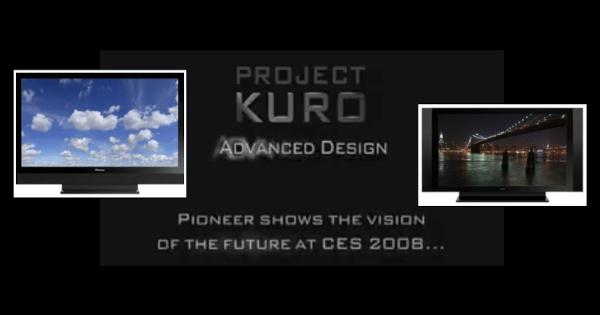Television: The Way We Were

But plasma was only one step in an ongoing parade of video designs. You don't have to go back much further than the early 2000s to recall when the first flat-screen TVs hit the market. Before that, the cathode ray tube (CRT) had dominated the television landscape for most of TV's existence. At their available large sizes (21-inch was long considered the cream of the crop until humongous 32 -inchers came out) such sets were immensely heavy, and today can be found, unmovable, in many a dusty basement or attic.
No single individual or company was responsible for the invention of television. It was the culmination of a long string of breakthroughs by persistent researchers. But if you're into the details, a good start would be to google both John Baird and Philo Farnsworth.
TV became mainstream in the 1950s, but black and white broadcasting dominated until the late 1960s when color became available. It was a slow transition, since the early color sets were prohibitively expensive and color broadcasting was limited. Color TV via CRT rattled along for years until genuinely large screen sizes were introduced. First seen in the late 1980s, these were initially CRT designs in huge, heavy boxes. Unlike conventional TV sets they used three separate CRT tubes, one each for red, green, and blue. When combined together, and projecting from the back onto a rear-projection screen, they generated images far larger than any conventional CRT display could produce. I reviewed several such monsters beginning in the mid-1990s (for the late Stereophile Guide to Home Theater. I eventually purchased one of them, made by Hitachi (no longer in the TV business). By the time I moved out of Los Angeles that set had been shoved into a corner. Pre-move I gave it away, along with a smaller version from Toshiba that was one of the first televisions to sport the HDTV aspect ratio.
A friend here in Florida still has one of those monsters in an upstairs bedroom. He was interested in one of my old plasmas for that room until he decided there was no way he could wrestle that huge CRT rear projection set down the stairs. I wonder how he managed to get it up the stairs in the first place!
Using three cathode ray tubes for projection was pioneered by the late Henry Kloss of AR, KLH, and Cambridge Audio fame. While best known for his audio prowess, video was his passion. It's been said that he founded Advent Audio just to raise money to develop the Kloss (or Advent) NovaBeam projection system. It came with its own dedicated screen, the latter curved to maximize the brightness for a center viewer (off-center viewing was said to be poor). The NovaBeam was perhaps too far ahead of its time when introduced in the mid 1970s, but many later home projectors, both front and rear were at least partially inspired by it. (The history of home projectors, using a separate screen, rather than the rear projection of those one-piece, big-box sets, is its own long subject best left to a future blog.)
One-piece rear projection TVs makers eventually abandoned the CRT in favor of LCD or DLP (Digital Light Processing) designs, though still in large, cumbersome boxes. They also transitioned to the HDTV screen shape (16:9 vs. SDTV's 4:3) as HDTV became mainstream around the turn of the century. But their size and weight continued to be concerns, particularly as TV production and design became dominated by Japanese makers. TVs were no longer designed and manufactured in the USA, and the shipping costs for those bulky rear projection models must have been enormous.
By the time HDTV truly took off, flat screen TVs began their rapid ascent to market domination. I recall a press junket to Japan on the early aughts when Panasonic (?) excitedly announced that they soon expected to price their flat screen TVs to drop to $100/diagonal inch! The most popular big size then was 50-inches (today's 65-inchers and larger were still a dream). At $5,000 for a 50-inch set (nearly $9,000 in today's money!) it was no surprise that rear projection TVs remained popular as long as they did.
The modern flat-screen HDTV era thus began in the early 2000s. LCDs and Plasma duked it out for years until LCD finally won. As always, such battles are a complicated mix of cost and performance. Early LCDs could never beat out plasmas for image quality, but eventually came to corner a market dominated by cost and peak brightness (particularly the latter on a showroom floor).
Manufacturers continue to dabble in more exotic flat-screen candidates such as FED (Field Emission Display). The latter functions much like a CRT but in a flat screen form. It never got much traction beyond the R&D stage and still lingers there. I recall what I believe was a Toshiba prototype FED at a Japan trade show (sort of a mini CEDIA) in the early 2000s. I was impressed, but that was the last I heard about the technology. Information about FEDs can still be found on the web.
LCD's main competition today is OLED (for Organic Light Emitting Diodes), which first appeared in a 2007 Sony TV. It excelled in contrast and black level, but less so in brightness. Nevertheless, over the years as OLED prices dropped and peak brightness increased (the latter a vital concern as high dynamic range, a.k.a. HDR, sources hit the market) it gave LCD designs a run for their money (literally).
But nothing stands still in the TV business. By employing powerful microprocessors, LCD makers have added local dimming to their best sets, often in hundreds of zones. This has added deep black levels and high contrast to LCD's traditionally higher peak brightness. The best LCD designs can now compete neck-and-neck with OLEDs.
Because so many LCD sets over the years have been cheap and cheerful, LCD set makers have often felt the need to avoid using the term "LCD" in their LCD marketing. Samsung started it a few years ago by referring to its best LCD sets as "QLED," which many consumers likely confused with OLED. QLED designs (and similar variations such as mini-LED) are very different from OLEDs and are, at heart, sophisticated LCD designs. Each pixel in an OLED TV's image is actually an individual OLED that's driven directly. That's not true of a QLED (or a mini-LED).
But that might not be an issue in the future. Why not skip the interim step and use LEDs themselves as the pixels instead of LCDs, much as an OLED does? Because, up to now, those inorganic) LEDs are simply too large (and pricey) to function as the individual pixels in a home-sized display (the organic OLEDs in an OLED display are far smaller). But several manufacturers are working at shrinking LEDs to the point where, like OLEDs, they can both function as the actual pixels and compete in price with OLEDs. Such displays are currently available, but at mansion-sized screens and mansion-sized prices.





























































